In today's era of sports, full of stylized photography, cutting-edge video editing, and flashy social media graphics, it's easy to overlook illustration's historical contributions to the visual aesthetic of sports. In the 20th Century, before color photography became commonplace, the realm of athletics was home to a large stable of illustrators who helped Americans identify and appreciate their sporting heroes. While many of these illustrators gained national prominence thanks to newspaper syndication of the day, perhaps none is more identified with a specific locale than Karl Hubenthal in Los Angeles.
Hubenthal graduated from Hollywood High School in 1935 and later that year joined the Art Department of the Los Angeles Herald-Express newspaper. Shortly after, he was hand-picked by William Randolph Hearst himself to contribute editorial cartoons to Hearst newspapers. This background in editorial cartooning, where the idea being conveyed is equally as important as the artistic execution, served Hubenthal well and would later help his illustrations stand out in the sports world.
Karl enlisted in the Marines during World War II, contributing cover illustrations to The Leatherneck, the magazine of the United States Marine Corps. Following his military service Hubenthal worked as a freelance illustrator, returning to a Hearst newspaper staff in 1949. Over the next 3 plus decades, Hubenthal would contribute political and sports cartoons to Hearst papers, covering a wide variety of topics. Throughout the years, these cartoons usually had a California bent to them, from this UCLA piece (featuring Jackie Robinson) from the 1940s, this Bill Veeck piece from the 1950s, this Pete Reiser Dodgers piece from the 1960s, to this NFL piece from the 1970s, featuring Fran Tarkenton and Ken Stabler.
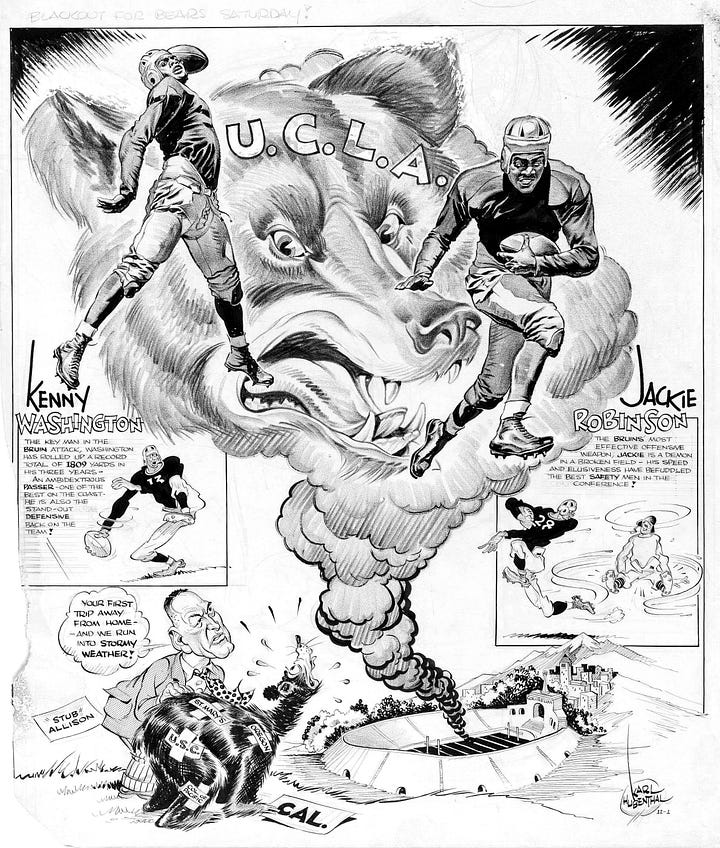
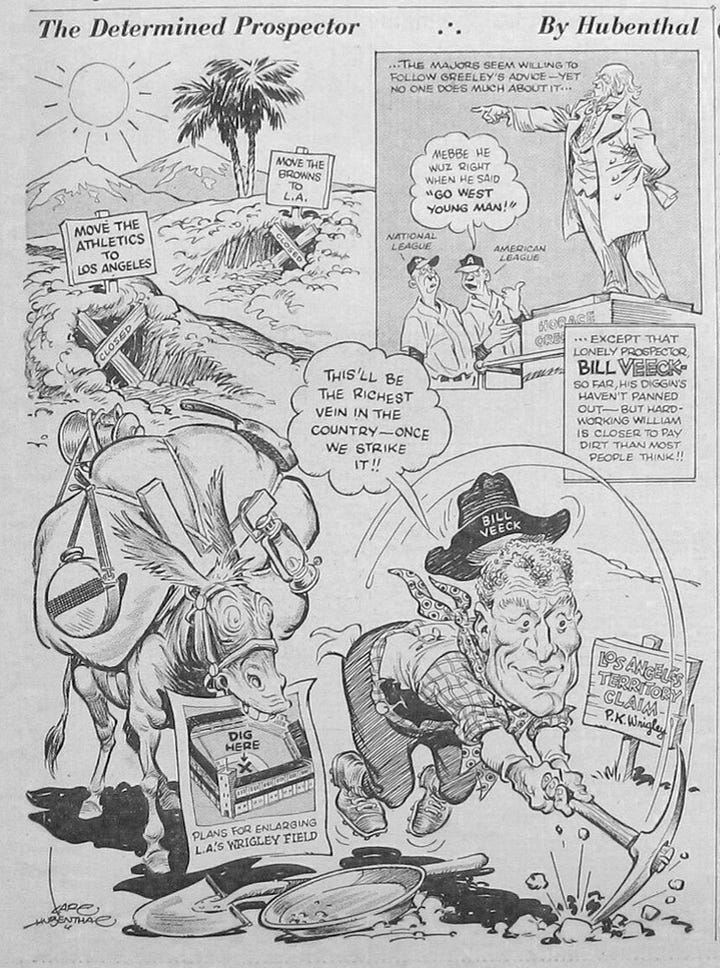
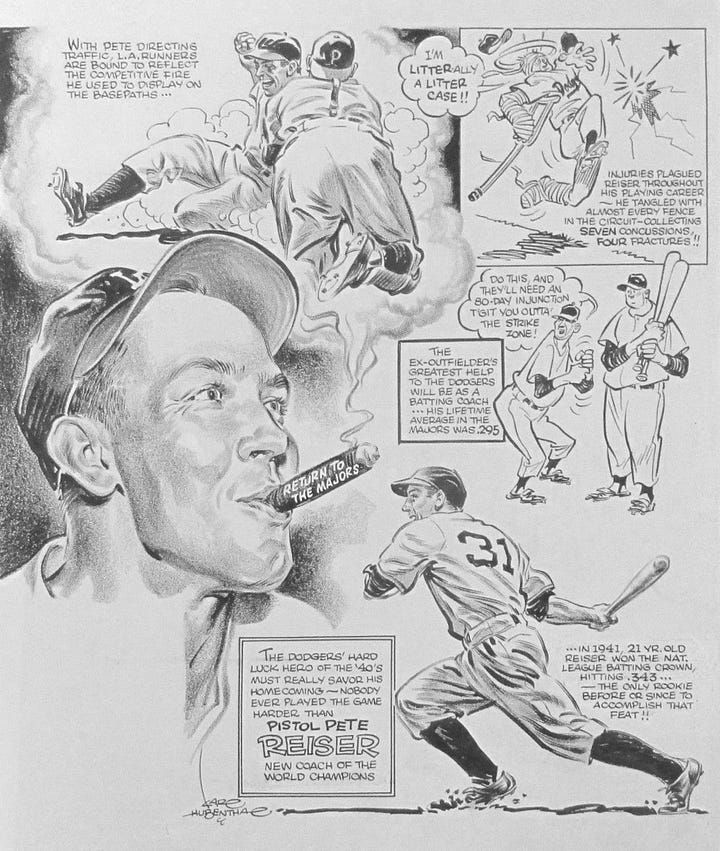
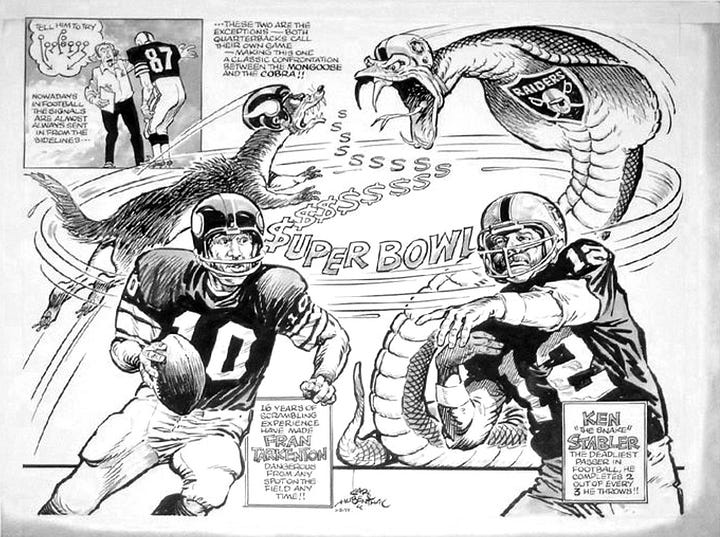
In the first half of the last century, Los Angeles was home to a variety of sports teams at both the collegiate and professional levels. It's here that we find some of Hubenthal's earliest sports work outside of newspapers, in program and yearbook cover designs for the NFL's Los Angeles Rams and the AFL's Los Angeles Chargers.
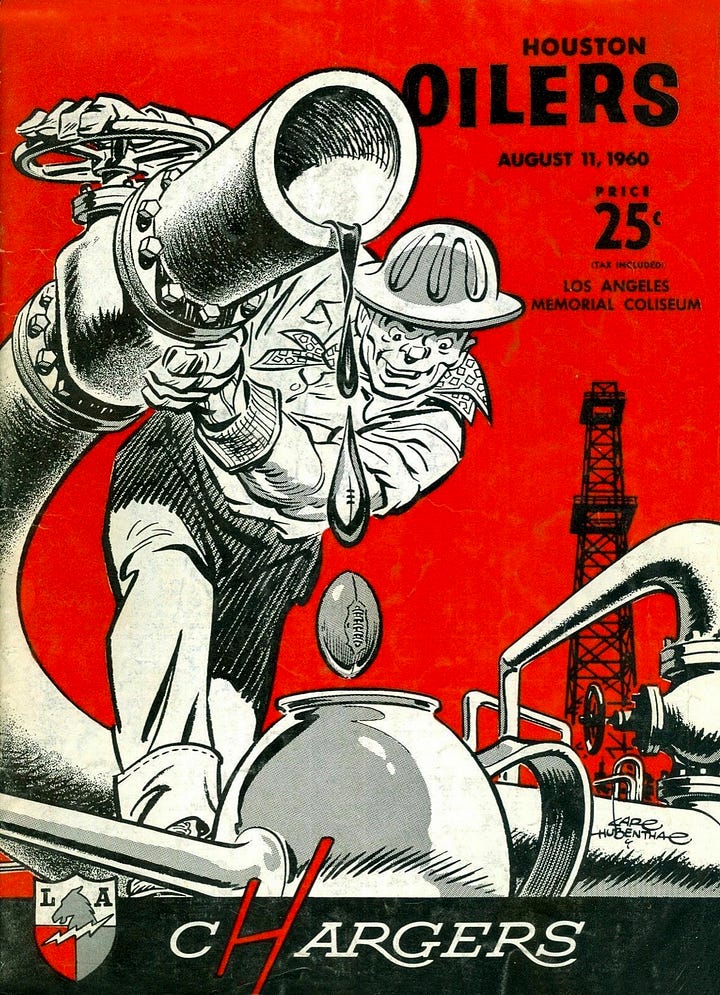
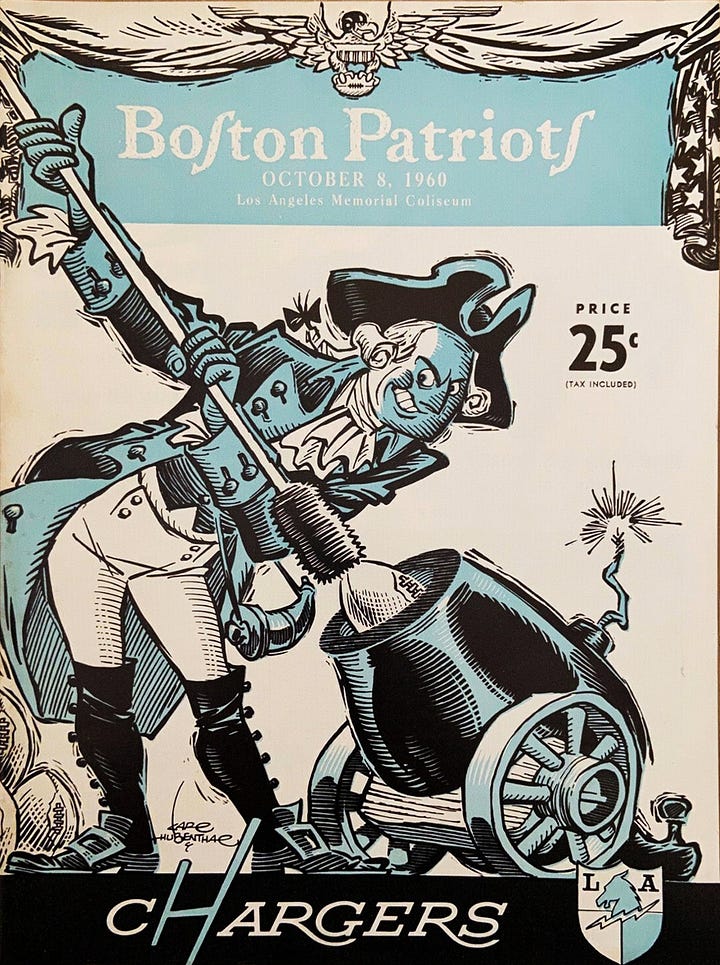
In the 1958, 1959 and 1960 Rams Yearbook covers we can glimpse the beginnings of Hubenthal's evolution as a cover artist. Where the '58 cover is more or less simply an illustration (albeit a beautiful one), the '59 cover shows a style more akin to Hubenthal's editorial work, using more humor and visual wit. The 1960 cover shows this style in full bore, as we see a grimacing ram's head biting the chin strap of a Rams helmet.
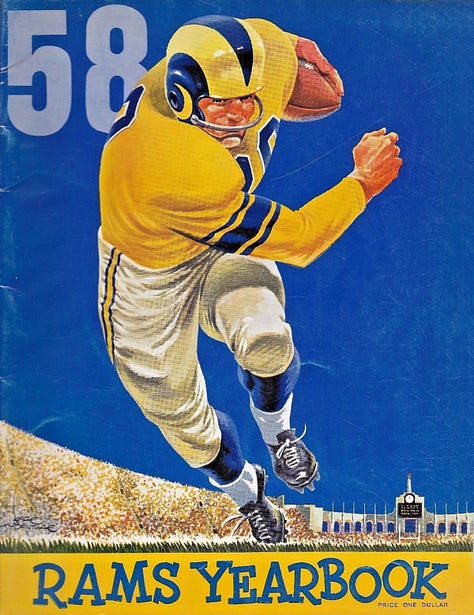
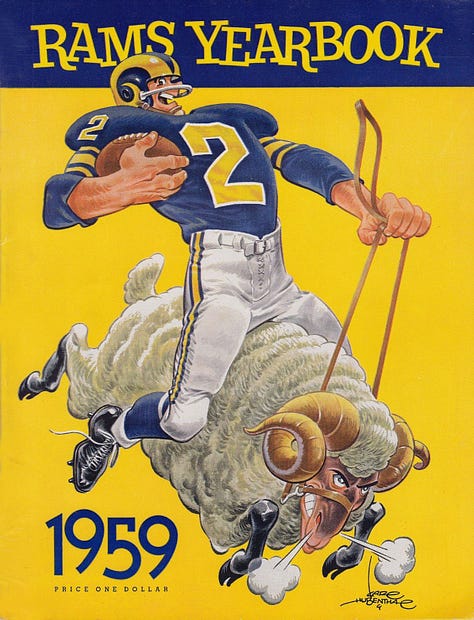
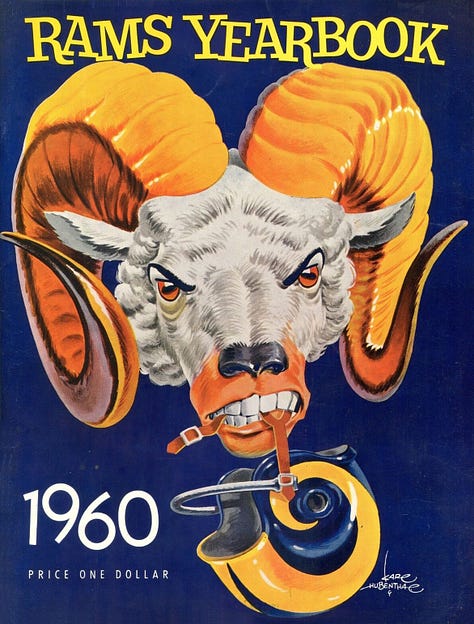
The following year Hubenthal used this more editorial style of illustration to great effect in a series of game-day programs for the Rams. For each game the cover design uses a single color to give graphic impact to an image depicting the two teams mascots squaring off visually. It's interesting to note that not all covers depict the Rams as the superior team. In particular, the wraparound cover for the December 17 contest between the Rams and the Green Bay Packers shows a meat packer standing proudly behind a counter with various cuts of Ram and other NFL teams.


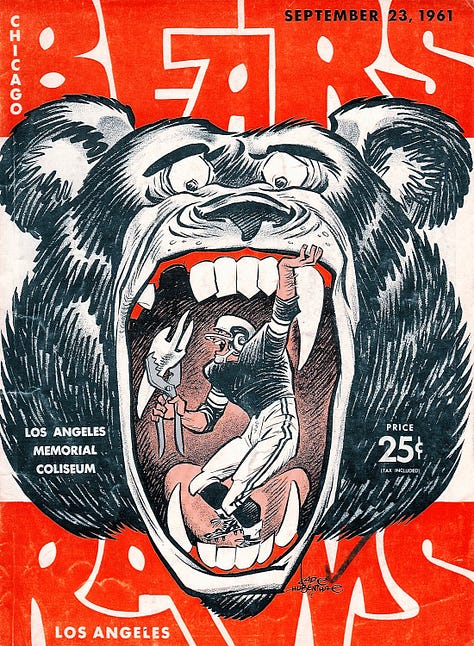


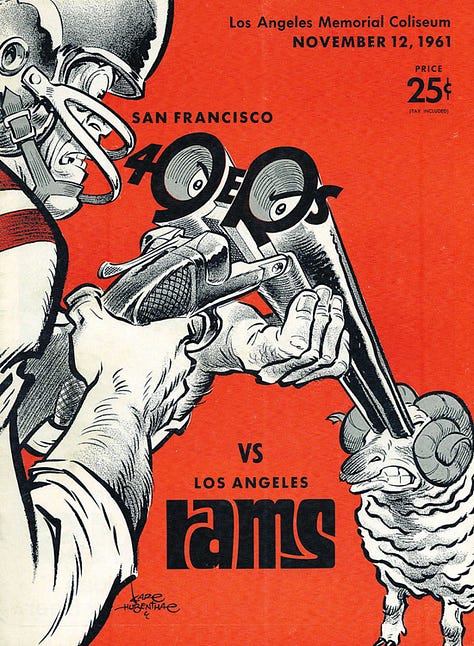
However, Los Angeles sports were really put in the national spotlight when major league baseball's Brooklyn Dodgers and New York Giants each left their homes for the West Coast in 1958. And it's with the Dodgers that Hubenthal did some of his most lasting work, in a professional relationship that flourished for the better part of the following 2 decades.
Throughout the 1960s and '70s Hubenthal contributed cover designs for a variety of Dodger publications - among them Gameday Programs, Yearbooks, Scorecards, and Media Guides. Perhaps most notable of Hubenthal's Dodgers work is this classic program for the 1965 World Series between the Dodgers and the Minnesota Twins.
Evoking the space race of that era, Hubenthal depicts the two teams manning spacecraft orbiting a smiling planet Earth. Virtually everything about this cover - the whimsical illustration, the typography, the colors, and the "Out of This World Series" play on words - contributes to its visual strength as a whole. Sixty years later, the design is still heralded as one of the best Program covers in World Series history.
Hubenthal would often contribute illustrations that were repurposed across a variety of Dodger publications for a given year, as evidenced by this 1967 Yearbook and Media Guide. While the Yearbook cover utilizes the full-color illustration, it's reproduced in black and white on the less important Media Guide cover. It's also interesting to note that the Media Guide is one of the few instances where Hubenthal's work is not signed with his full signature but with only the initials "K.H."



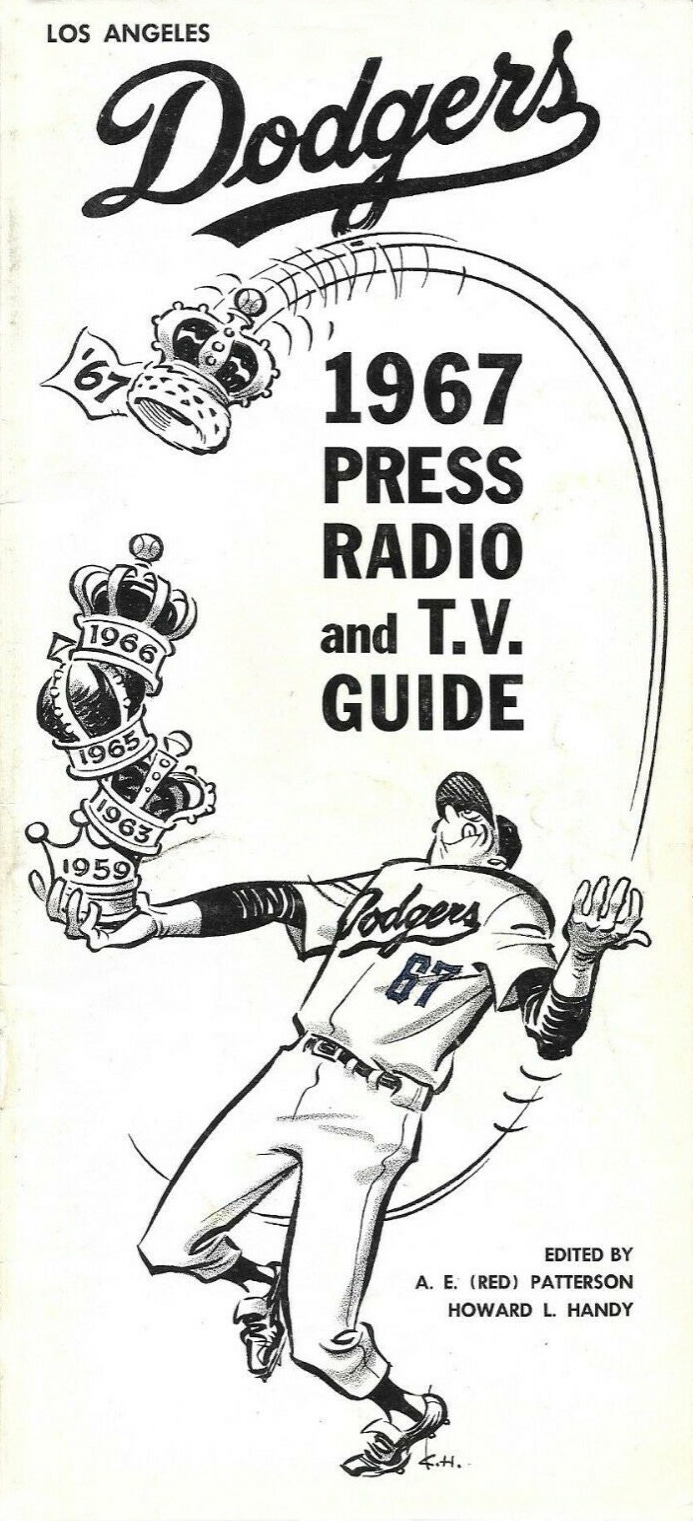
Other highlights of Hubenthal's Dodger work include the 1970 Scorecard , featuring 1969 NL Rookie of the Year Ted Sizemore, along with a nod to previous Dodger RoY winners. The 1971 Yearbook is another example of Hubenthal at the height of his illustrative prowess. Here he depicts a birthday cake filling Dodger Stadium in celebration of that park's 10th anniversary. However, a closer look shows that the Dodger script masthead isn't actually the team's logo, but in fact the logo is made out of the negative space between the names of Dodger players from the team's previous 10 seasons.

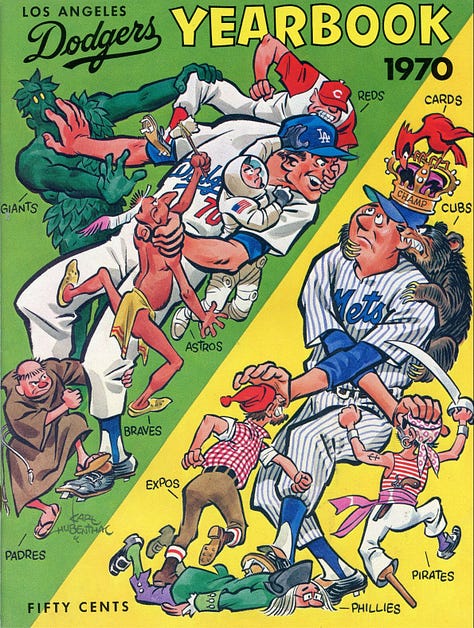
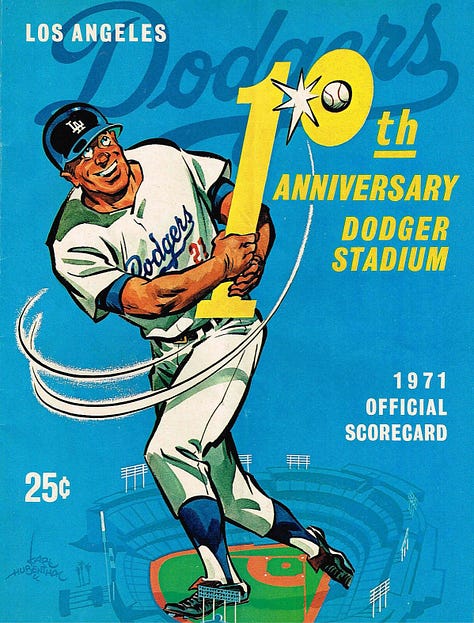
During this time when Hubenthal was producing so much great work for the Dodgers, he was by no means sitting idle outside of Chavez Ravine. Hubenthal also worked a bit on the hardwood, illustrating cover designs for Harlem Globetrotter programs in 1961, '65 and '67. Oddly enough, the only Hubenthal work I've found for a Los Angeles basketball team is a 1967 brochure promoting Lakers radio broadcasts.
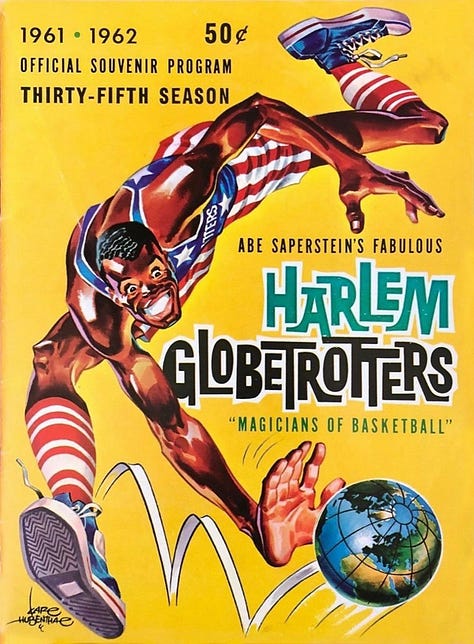
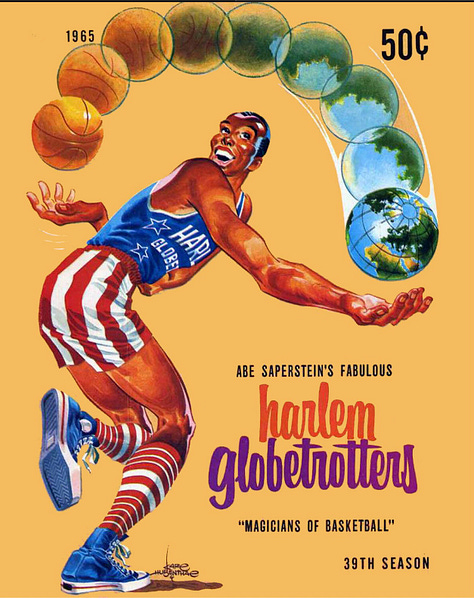

Looking back at Karl Hubenthal's work gives us an appreciation of a simpler time when sports held a different place in the American psyche. When we as fans didn't have 24-hour access to teams and athletes. When the day's events on the field, the diamond or the court didn't have to be instantly turned into a social media post. When a program cover's artwork could tide us over until we returned to the stadium to cheer on our heroes again.
A version of this article previously appeared on Uni Watch. Thanks to UW Editor Phil Hecken for allowing me to republish it here in a slightly different form.


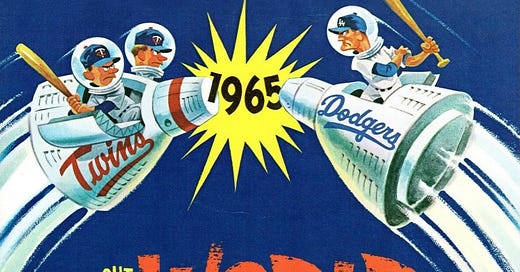


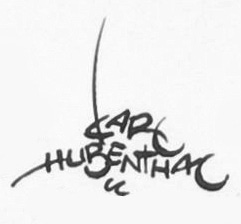
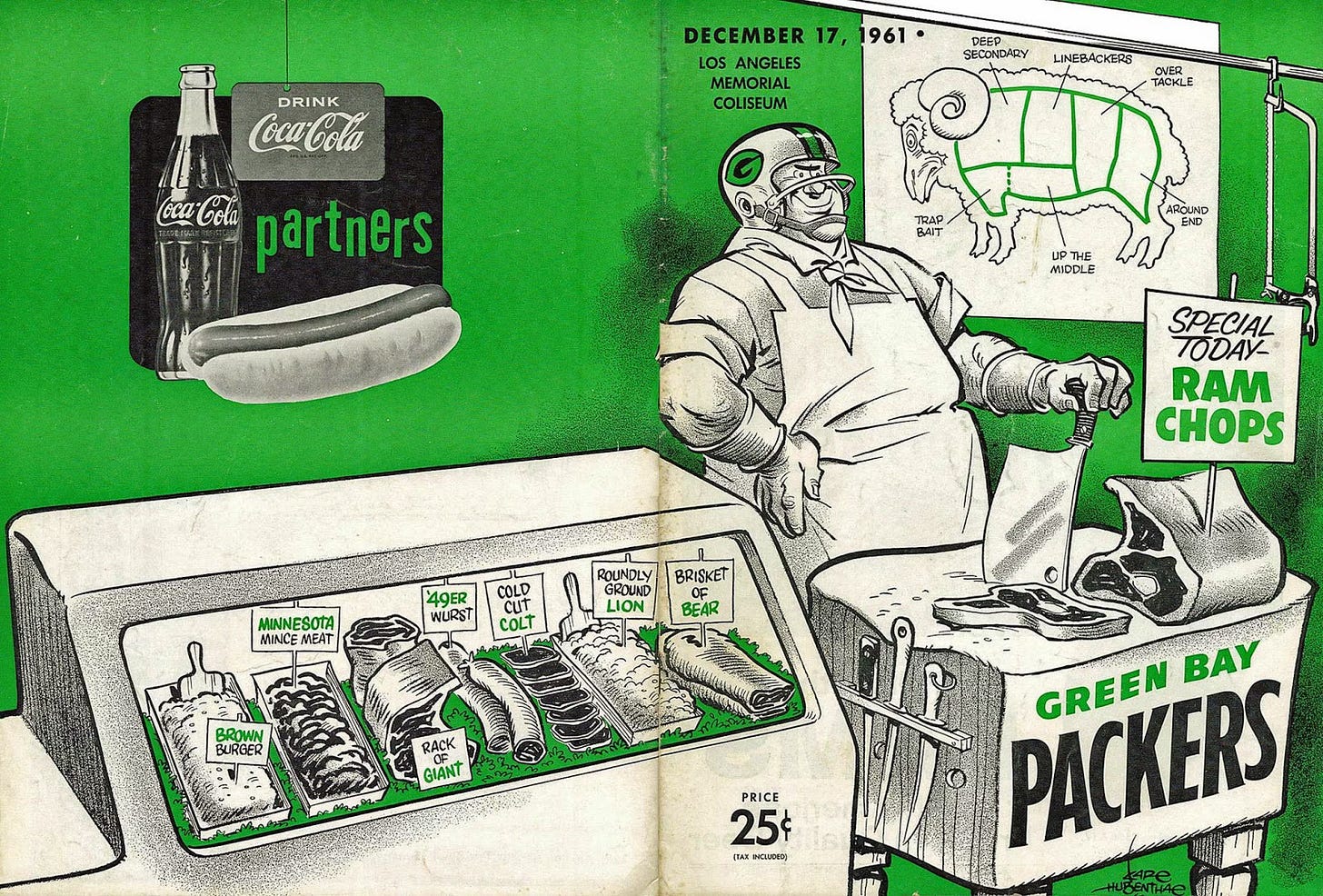



Great survey of Hubenthal's work. Nothing invokes 1960s sports like his illustrations. One can still see Hubenthal's art all around Dodger Stadium, especially on the Club Level.
That 1965 Put of This World Series program…absolutely my favorite!